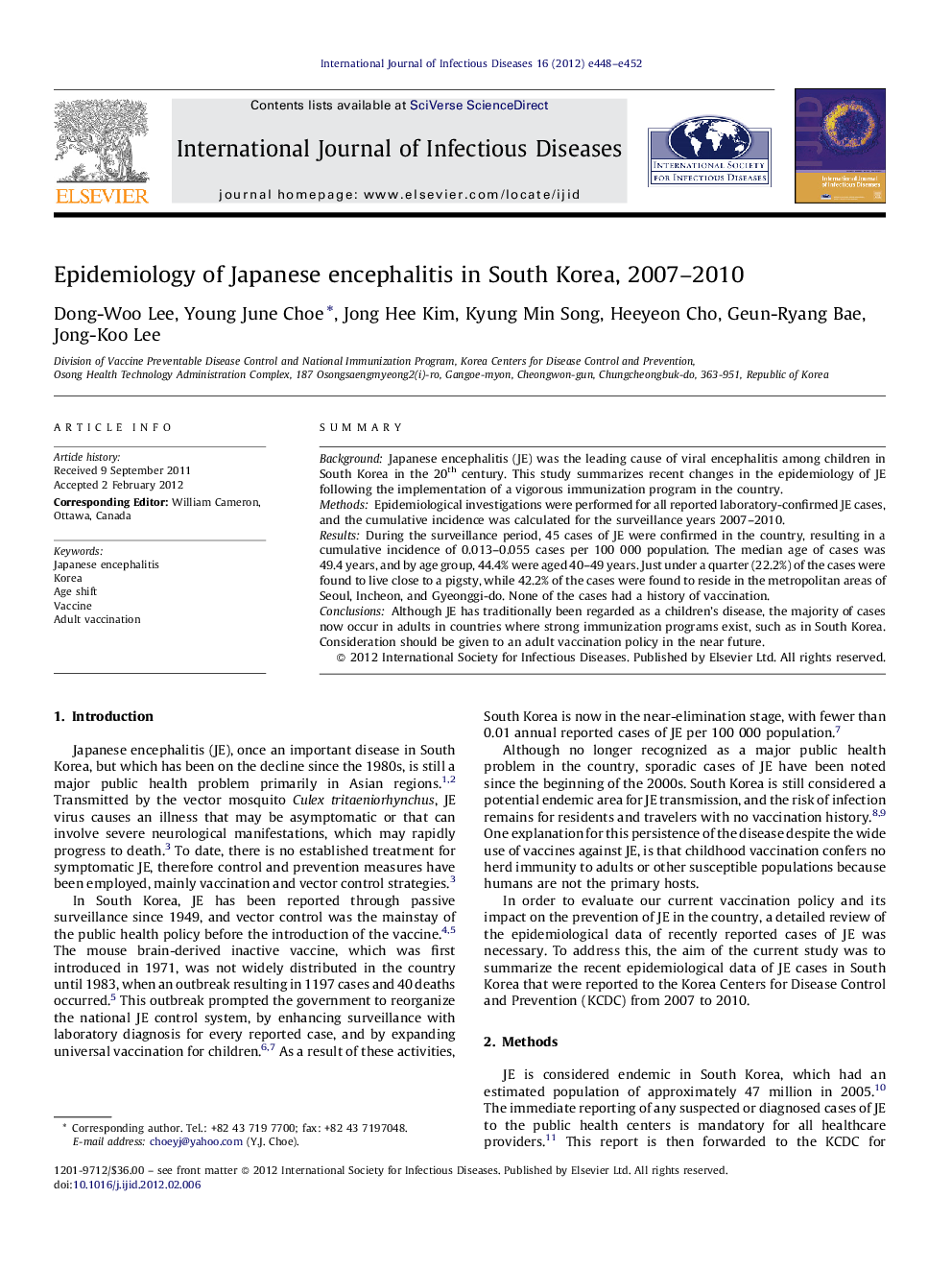| Article ID | Journal | Published Year | Pages | File Type |
|---|---|---|---|---|
| 3363472 | International Journal of Infectious Diseases | 2012 | 5 Pages |
SummaryBackgroundJapanese encephalitis (JE) was the leading cause of viral encephalitis among children in South Korea in the 20th century. This study summarizes recent changes in the epidemiology of JE following the implementation of a vigorous immunization program in the country.MethodsEpidemiological investigations were performed for all reported laboratory-confirmed JE cases, and the cumulative incidence was calculated for the surveillance years 2007–2010.ResultsDuring the surveillance period, 45 cases of JE were confirmed in the country, resulting in a cumulative incidence of 0.013–0.055 cases per 100 000 population. The median age of cases was 49.4 years, and by age group, 44.4% were aged 40–49 years. Just under a quarter (22.2%) of the cases were found to live close to a pigsty, while 42.2% of the cases were found to reside in the metropolitan areas of Seoul, Incheon, and Gyeonggi-do. None of the cases had a history of vaccination.ConclusionsAlthough JE has traditionally been regarded as a children's disease, the majority of cases now occur in adults in countries where strong immunization programs exist, such as in South Korea. Consideration should be given to an adult vaccination policy in the near future.
